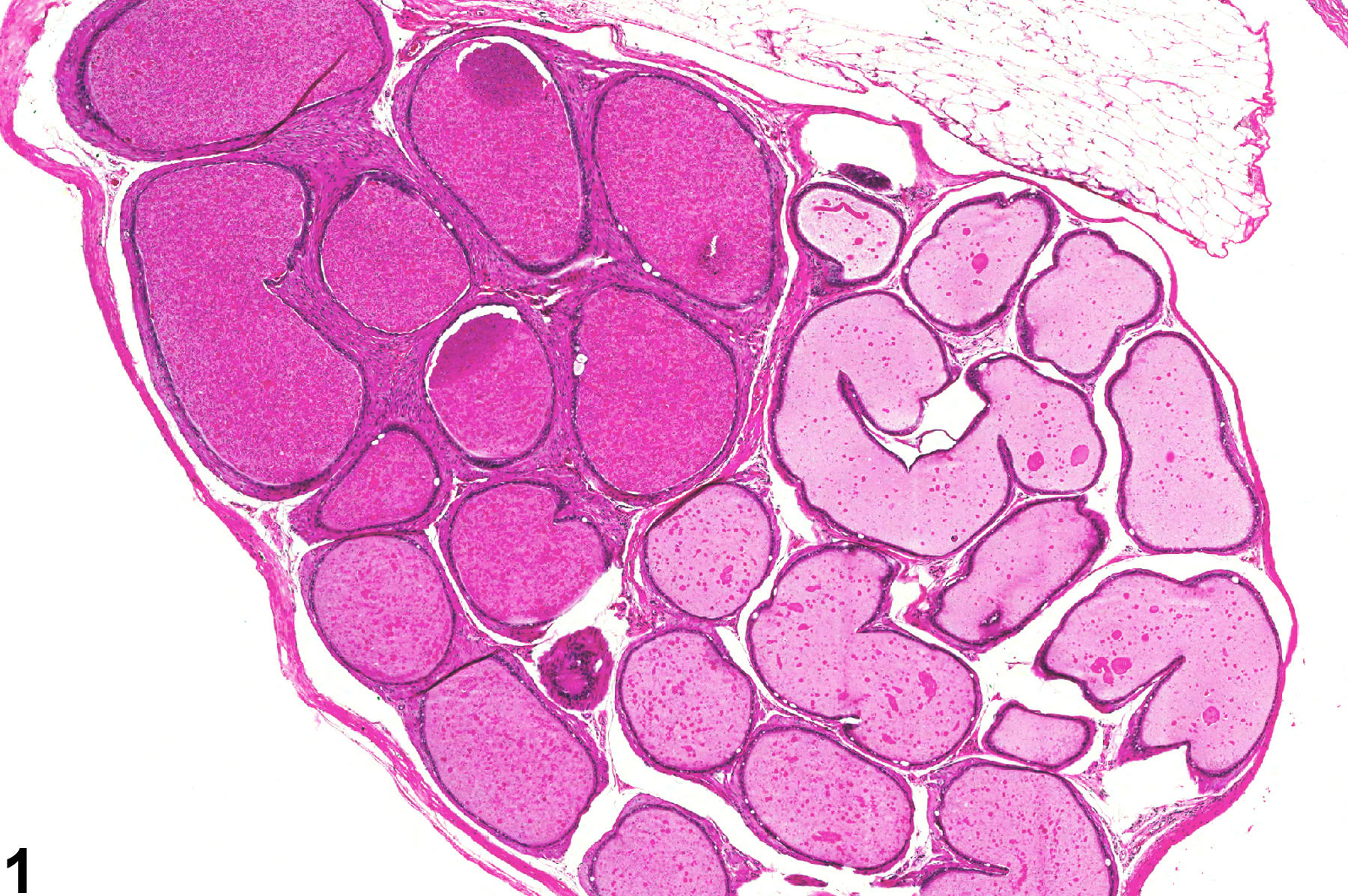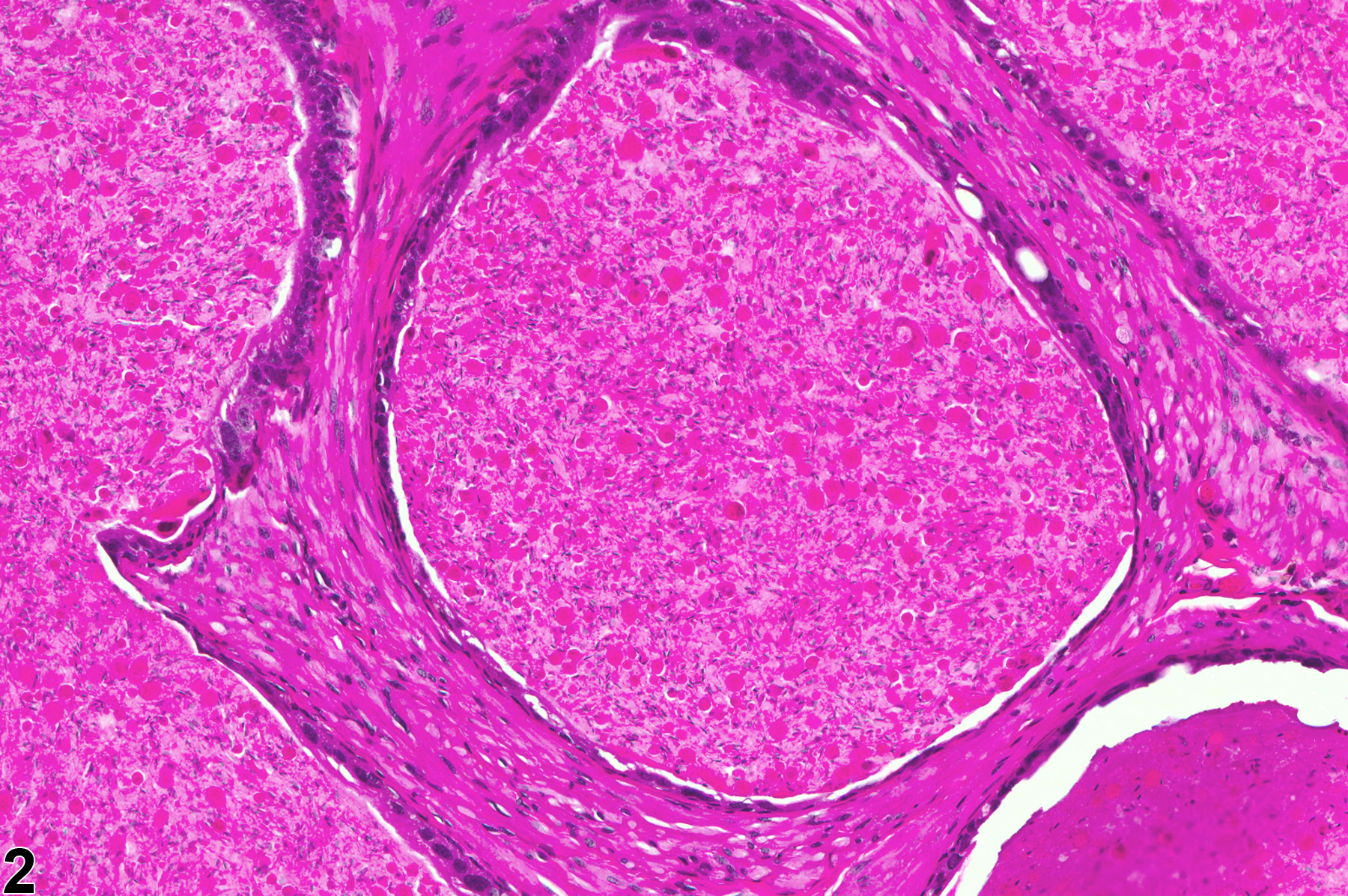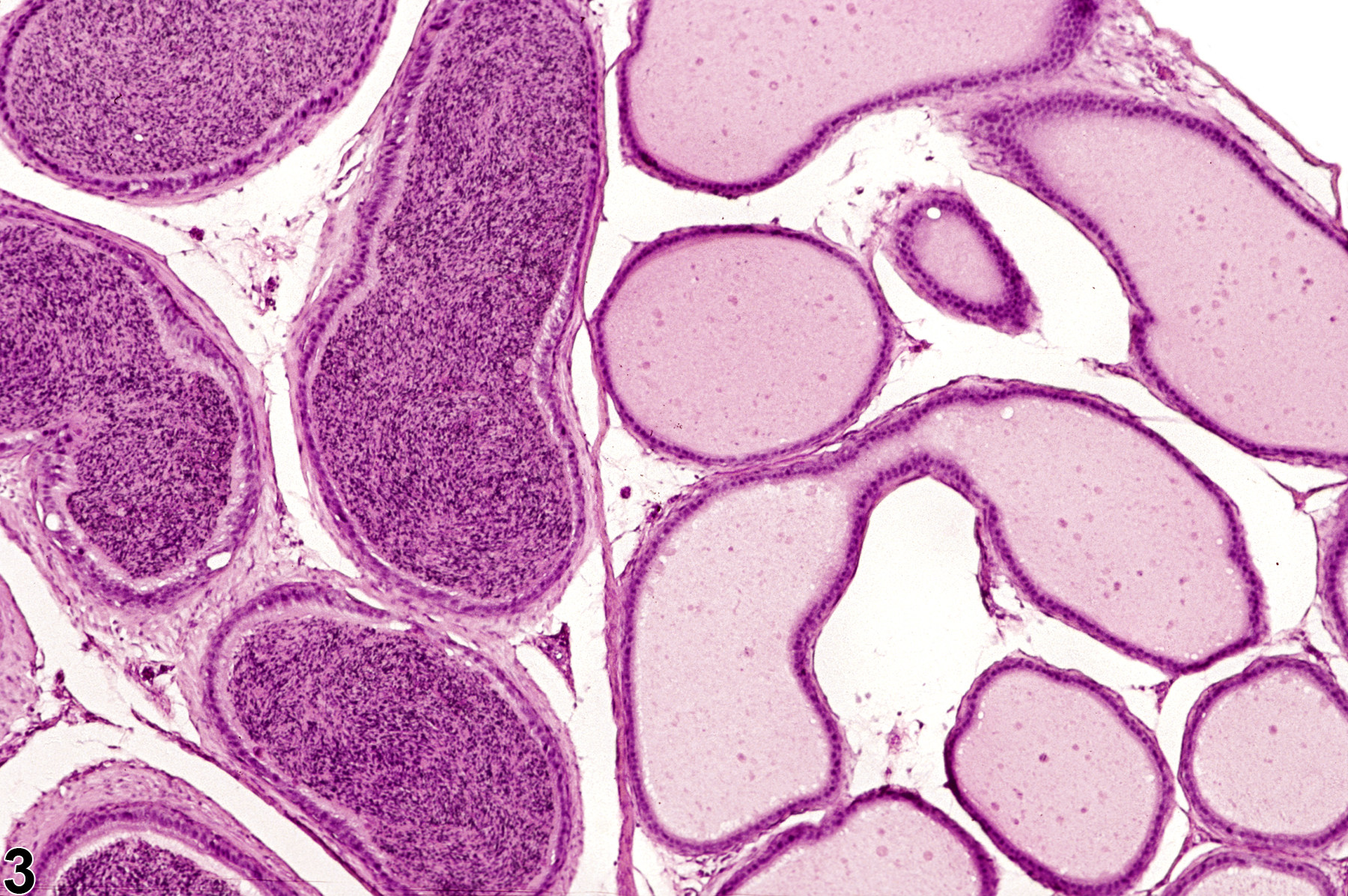Reproductive System, Male
Epididymis - Sperm Stasis
Narrative
Comment:
Sperm stasis is most commonly seen in the cauda epididymis following cessation of sperm production by the testis. Sperm become sequestered in the caudal ducts and are intensely eosinophilic (Figure 1, Figure 2, and Figure 3). The more proximal ducts are generally empty of sperm. Sperm stasis also occurs in the caput and efferent ducts as a result of obstructive lesions. In Figure 4, the sequestered sperm are basophilic. Sperm stasis may progress to sperm granuloma if the epithelial lining is breached and sperm gain access to the interstitium.
Recommendations:
Sperm stasis should be recorded and graded and should be discussed in the pathology narrative if the incidence and/or severity appears to be related to chemical administration. Bilateral should be indicated when both epididymides are involved, with severity grade based on the more severely affected epididymis. Correlation with any spermatogenic disturbances should be noted in the pathology narrative to aid interpretation.

Epididymis - Sperm Stasis. Ducts filled with sperm in a male B6C3F1 mouse from a chronic study.





